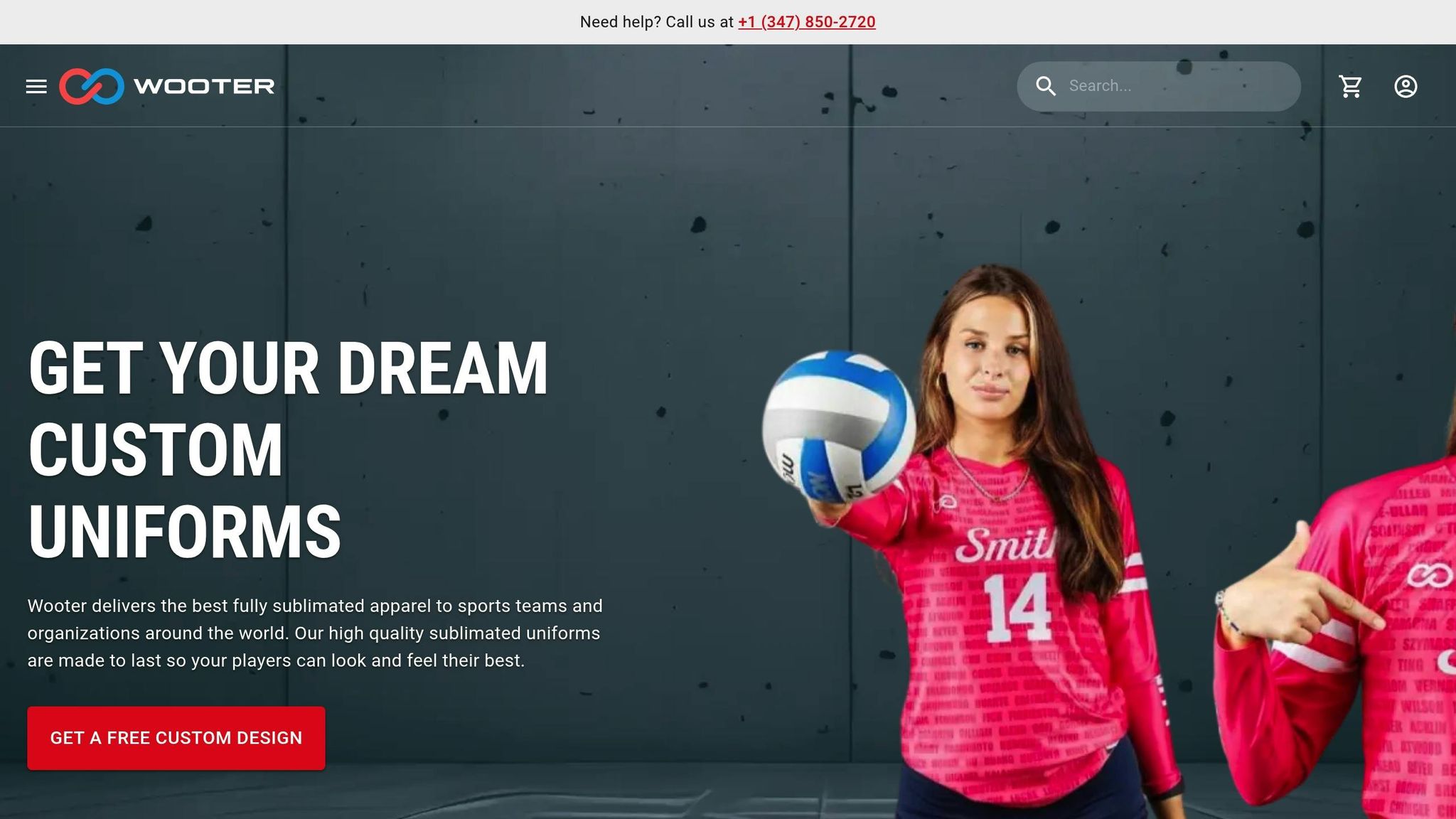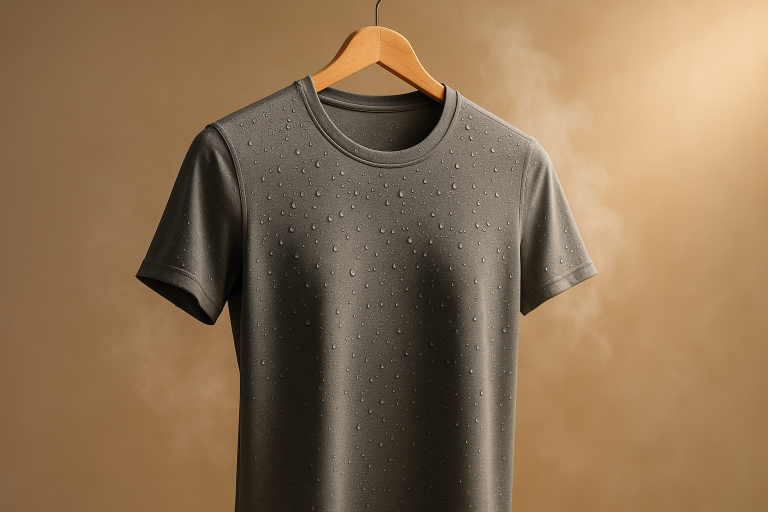Anti-microbial fabrics in sportswear are designed to fight odor at its source by preventing bacteria from thriving. These fabrics use advanced treatments – like silver or zinc-based technologies – embedded directly into fibers to stop bacteria from breaking down sweat into smelly compounds. Unlike surface coatings that fade after a few washes, these treatments are long-lasting, often surviving over 100 wash cycles.
Key Takeaways:
- How it works: Stops bacteria from growing by disrupting their cellular processes.
- Why it matters: Reduces odor, boosts athlete confidence, and minimizes distractions.
- Durability: Fiber-integrated treatments last longer than surface-applied ones.
- Benefits: Fewer washes, longer-lasting uniforms, and reduced maintenance costs.
Anti-microbial sportswear is especially useful for team uniforms that endure heavy use during games and tournaments. It helps athletes stay comfortable and focused while extending the life of their gear.
How Anti-Microbial Fabrics Stop Odor
How Anti-Microbial Treatments Work
Anti-microbial treatments work by disrupting the way bacteria function, stopping them from multiplying and causing odors. Different technologies tackle this in unique ways.
Silver-based technology embeds silver ions directly into fabric fibers. These ions create an environment that bacteria can’t survive in, disrupting their cellular processes and neutralizing them quickly.
Quaternary ammonium compounds (quats) work by giving the fabric surface a positive charge, which attracts negatively charged bacteria. When bacteria come into contact, their cell membranes are punctured, killing them almost instantly.
Zinc-based treatments rely on zinc pyrithione to block nutrient transport within bacterial cells. This essentially starves the bacteria, preventing them from thriving in the warm, moist conditions often found in athletic wear.
The standout feature of these treatments is their continuous action. Unlike deodorants that wear off with time or activity, anti-microbial fabrics actively prevent odor-causing bacteria from forming. They don’t just cover up odors – they stop them at the source.
Modern formulations are designed to target harmful bacteria while leaving beneficial skin microorganisms largely unaffected. This means they keep uniforms fresh without compromising skin health, even during extended wear.
How Long Anti-Microbial Treatments Last
The durability of anti-microbial treatments depends on how they’re applied to the fabric. Surface-applied treatments, which are sprayed or coated onto garments, tend to last for about 10 to 20 wash cycles before their effectiveness drops noticeably.
Fiber-integrated treatments, on the other hand, embed anti-microbial agents directly into the fiber during production. This makes them far more durable, often maintaining effectiveness for 100+ wash cycles since the treatment becomes part of the fabric itself.
The most durable option is yarn-level integration, where anti-microbial agents are added during the yarn spinning process. This method ensures protection that can last the entire life of the garment, often surviving over 200 wash cycles.
However, high washing temperatures (above 140°F) and harsh detergents can shorten the lifespan of these treatments.
Among the available options, silver-based treatments are typically the most durable. Silver ions are highly stable and can move within the fiber structure, maintaining their effectiveness over time. Zinc-based treatments offer moderate durability, while some organic compounds may need more frequent reapplication.
For team uniforms that endure heavy use during long seasons, investing in fiber-integrated or yarn-level anti-microbial treatments is a smart choice. These options provide consistent odor control and reduce the need for frequent replacements, keeping uniforms fresh even through intense games and tournaments.
Anti-Odor Fabrics: What Are They? How Do They Work?
Benefits of Anti-Microbial Fabrics in Sportswear
Anti-microbial fabrics bring a range of advantages to sportswear, making them a game-changer for athletes and teams alike.
Odor Control and Lasting Freshness
These fabrics work by preventing the buildup of odors caused by sweat, keeping sports gear fresh even after intense use. This is especially helpful during back-to-back games or practice sessions when uniforms might not get washed immediately. Plus, their ability to manage moisture helps gear dry faster, adding to overall comfort.
Whether tossed into a gym bag or left in a locker, uniforms treated with anti-microbial technology avoid that lingering "used" smell, making them much more pleasant to handle between workouts.
Less Frequent Washing and Increased Longevity
Because anti-microbial fabrics resist odor and bacteria, they don’t need to be washed as often. This reduces wear and tear on the material, helping uniforms last longer. Fewer washes also mean lower water and energy usage, which is a win for both your wallet and the planet – especially during packed tournament schedules when time and resources are limited.
Safe for Skin and Better for the Environment
These fabrics are designed to be hypoallergenic, making them safe for prolonged contact with skin. By relying on natural elements in their treatments, they reduce the use of harsh chemicals, making them more environmentally friendly. This also means less textile waste and a healthier locker room environment.
Altogether, these benefits make anti-microbial sportswear a smart choice for athletes. They stay fresh, durable, and comfortable, helping teams focus on their performance without worrying about their gear.
sbb-itb-4d95ad3
Comparing Anti-Microbial Technologies
When it comes to tackling odor in team uniforms, not all anti-microbial treatments are created equal. Each technology brings its own strengths to the table, especially in terms of performance, longevity, and cost-effectiveness for sportswear.
Main Technologies and Their Features
Here’s a closer look at the leading anti-microbial options:
- Silver-based: Relies on silver ions to provide consistent and long-lasting odor control.
- Polygiene StayFresh™: Uses recycled silver salt for a sustainable solution. It bonds permanently to fabrics, maintaining breathability and moisture-wicking capabilities.
- Copper-infused: Employs copper ions to disrupt bacterial membranes, ensuring effective odor control with added durability.
- Zinc-based: A gentler option that’s ideal for sensitive skin, making it a good fit for youth sports uniforms.
- Graphene-enhanced: Incorporates advanced graphene particles to deliver high-end odor control and performance.
Technology Comparison Overview
Here’s a side-by-side look at the key features of these technologies:
| Technology | Key Active Component | Notable Features |
|---|---|---|
| Silver-based | Silver ions | Reliable and consistent odor control |
| Polygiene StayFresh™ | Recycled silver salt | Eco-friendly, durable, and breathable |
| Copper-infused | Copper ions | Strong odor control with enhanced durability |
| Zinc-based | Zinc compounds | Skin-friendly and effective for odor control |
| Graphene-enhanced | Graphene particles | High-performance with premium positioning |
Choosing the right technology depends on several factors – how often the uniforms are washed, the specific needs of the team, budget considerations, and any skin sensitivities. Opting for a treatment that holds up through frequent washes can extend the life of the uniforms, ultimately saving money and reducing waste.
Anti-Microbial Fabrics in Custom Team Uniforms
Why Teams Need Anti-Microbial Fabrics
Sports teams face a unique challenge: sweat. Intense practices and games lead to heavy sweating, which creates the perfect breeding ground for bacteria. This can result in persistent odors that stick to uniforms, making them unpleasant to wear. Anti-microbial fabrics tackle this issue by controlling odor buildup, keeping uniforms fresher for longer. Plus, when uniforms stay fresh, they require less frequent washing, which not only extends their lifespan but also reduces costs during busy tournament seasons. It’s no wonder teams are looking for advanced fabric technologies to meet these needs.
Wooter Apparel‘s Quality Standards

Wooter Apparel takes these challenges head-on by incorporating anti-microbial treatments into their custom team uniforms. Using a fully sublimated design process, they embed odor-fighting properties directly into the fabric, ensuring that the treatment becomes a permanent part of the material.
Their uniform packages are designed with both performance and affordability in mind. Beyond odor control, these uniforms are built to handle the intense demands of sports, offering durability, breathability, and comfort.
To guarantee long-lasting effectiveness, Wooter Apparel applies strict quality control measures. The sublimation process ensures the anti-microbial properties won’t fade or wash out over time, keeping uniforms fresh game after game.
What’s more, Wooter Apparel offers free custom design services, tailoring each uniform to the specific needs of athletes. With quick delivery times and a focus on performance, their uniforms strike the perfect balance between functionality and style, making them a reliable choice for teams across all sports.
Conclusion
Key Points to Remember
Anti-microbial fabrics bring practical advantages that directly impact team performance. By curbing bacterial growth, these materials help keep uniforms fresh, preventing unpleasant odors and reducing the need for frequent washing. This not only extends the life of the uniforms but also cuts down on maintenance costs – an important benefit for teams with demanding schedules or lengthy tournaments.
These treatments ensure uniforms stay fresher longer, allowing athletes to focus entirely on their game. Fewer wash cycles mean less wear and tear, preserving the quality of the gear over time. For teams investing in custom uniforms, companies like Wooter Apparel provide high-quality options that balance performance and durability. With custom jerseys starting at $16.99 each and full team packages available for $199.99, maintaining professional-grade odor control is both accessible and budget-friendly.
Anti-microbial fabrics tackle a common challenge for sports teams, offering a solution that boosts confidence and readiness on the field. As technology advances, this feature is becoming a must-have for teams aiming to stay at the top of their game.
FAQs
How do anti-microbial fabrics in sportswear keep odors under control compared to deodorants?
Anti-microbial fabrics in sportswear tackle odor at its core by focusing on bacteria. These fabrics are designed to stop odor-causing bacteria from growing directly on the material, keeping your workout gear fresher, even after intense sessions.
On the other hand, deodorants work by reducing or masking odor on the skin. While effective for personal freshness, they don’t prevent bacteria from building up on clothing, which can lead to persistent smells over time. Anti-microbial fabrics step in as a long-lasting and effective solution for odor control, making them a great fit for activewear like custom team uniforms.
What are the best washing practices to preserve the odor-fighting properties of anti-microbial sportswear?
To maintain the odor-fighting abilities of your anti-microbial sportswear, stick to washing it in cold water on a gentle cycle with a good-quality detergent. Steer clear of hot water or bleach, as these can break down the anti-microbial treatment over time. When it comes to drying, air-drying is your best bet. If you need to use a dryer, opt for a low-heat setting to avoid causing damage. Following these easy tips will help keep your gear fresh and performing well for longer.
How do anti-microbial fabrics benefit the environment when used in sports uniforms?
Anti-microbial fabrics in sports uniforms come with some impressive eco-friendly perks. One big advantage? They cut down on the need for frequent washing, which means less water, energy, and detergent usage. That’s a win for the environment and for anyone looking to reduce their daily footprint.
On top of that, these fabrics help uniforms last longer by reducing the wear and tear that comes from constant washing. Fewer replacements mean less waste, making these uniforms a smarter, greener option for athletes and teams.

